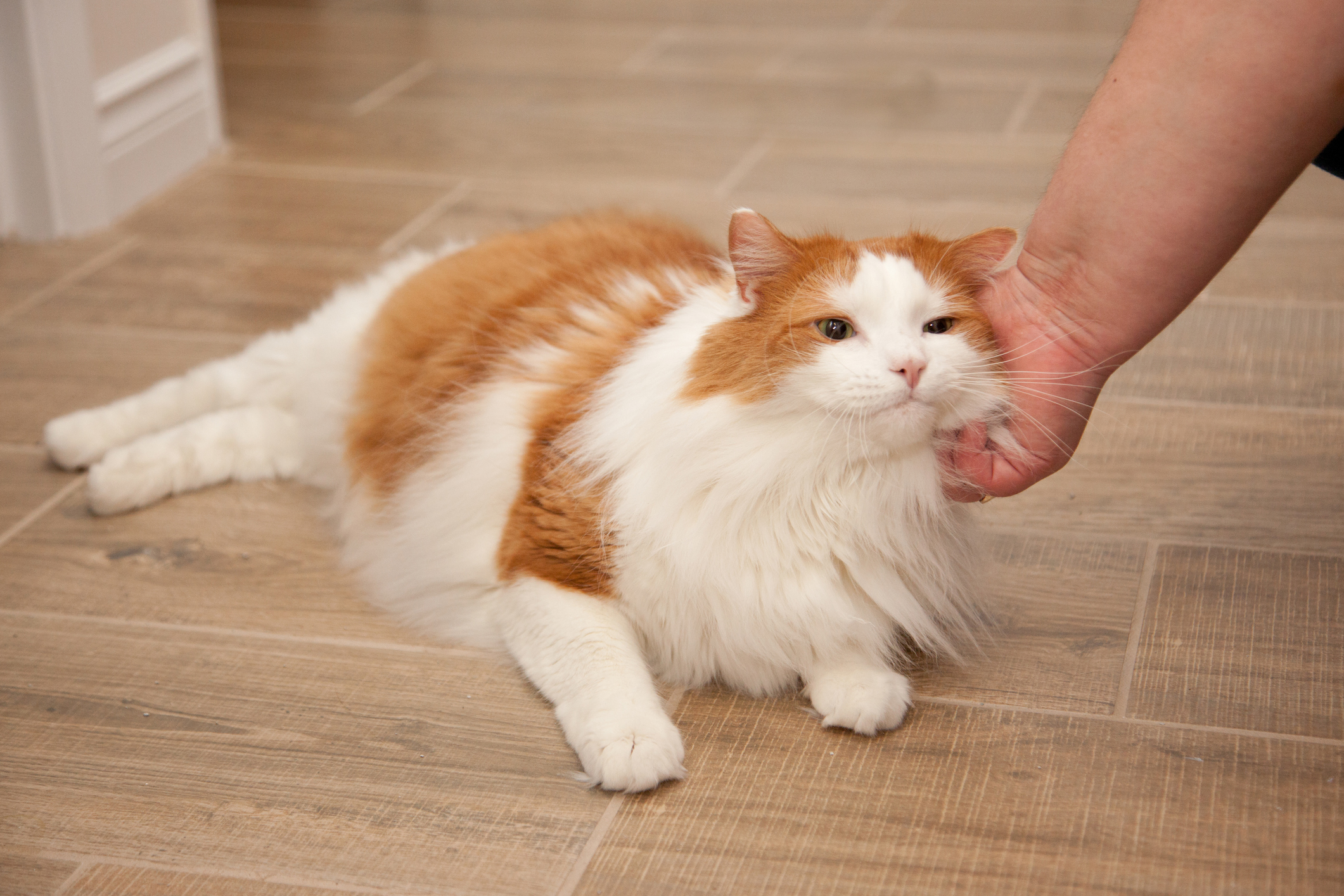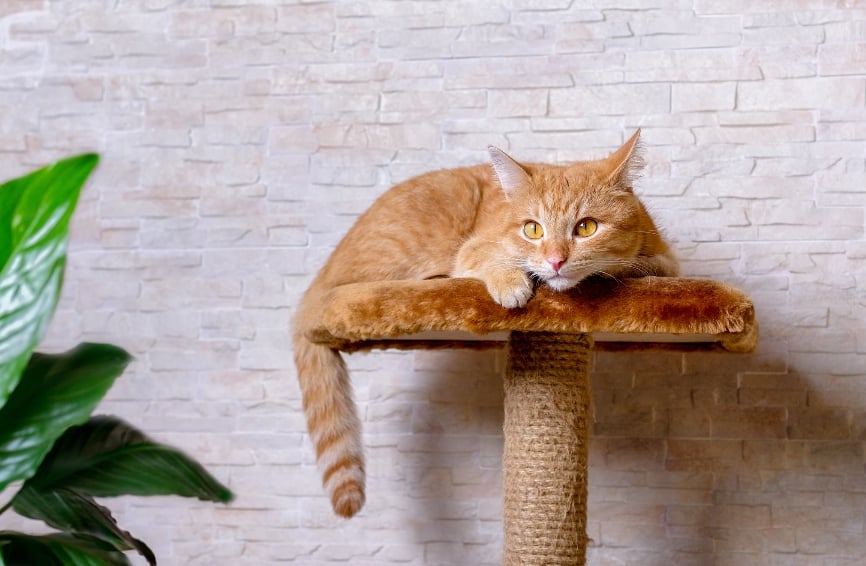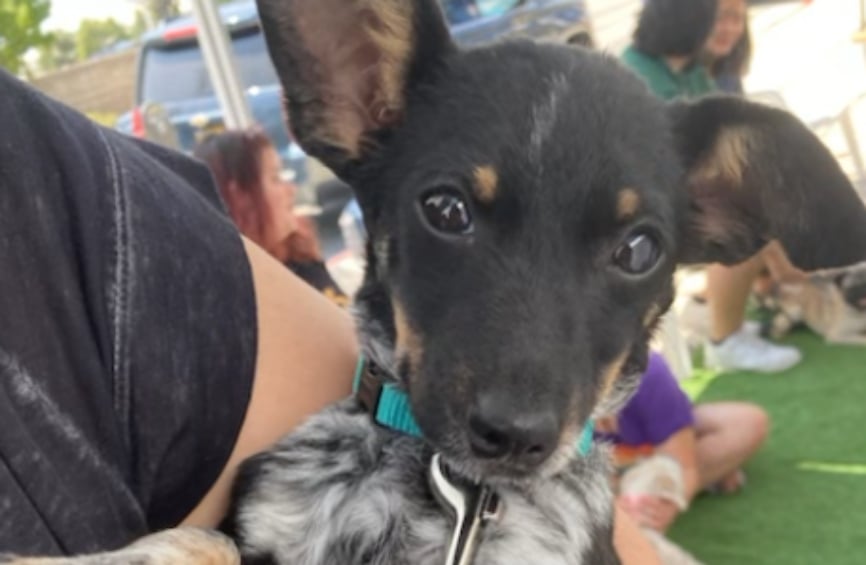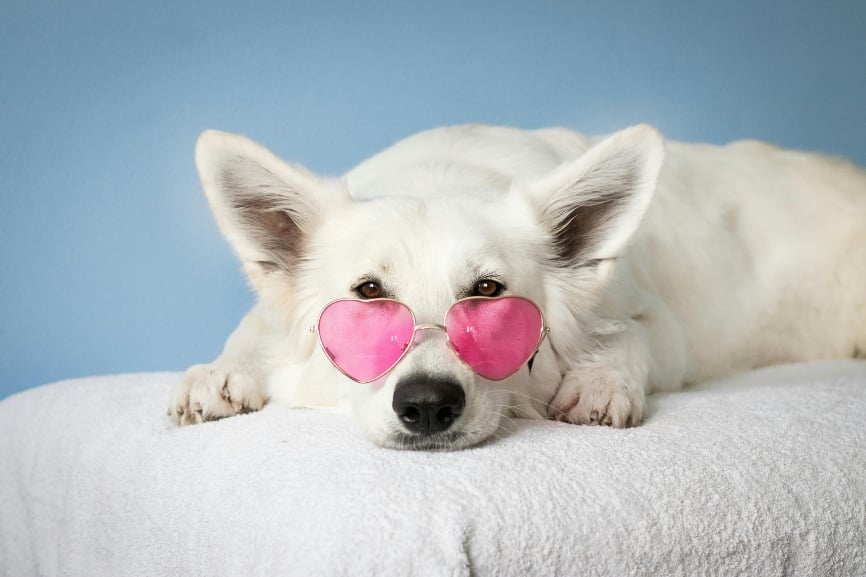Table of Contents
Unlike humans who communicate with each other via talking, cats generally communicate with their own kind via scents, postures like raised backs or stick-straight tails, physical contact such as rubbing and batting, and even eye movements like blinking or squinting.
When they are trying to intimidate another cat, they can sometimes hiss, growl, or yowl as if to say, “back off, buddy!” to the offending feline. Other forms of sound-based communication include chattering and caterwauling (especially when trying to mate).
The cat meow: reserved for humans
You may have noticed that of all the communication forms outlined above, we didn’t include meowing on our list. That’s because cats reserve meowing for their interactions with humans.
That’s right — that cute, adorable, hard-to-resist meow has been crafted over the centuries by felines as a way to “talk” to humans, and they rarely (if ever) use it as a form of communication amongst each other. And you know what? Cats have gotten pretty good at getting humans to respond in the way they want.
If there’s one person who knows a thing or two about cat meows, it’s definitely psychologist Nicholas Nicastro, PhD. A cat person himself, Dr. Nicastro actually wrote his 2002 thesis at Cornell University on the many different versions of cat meows, and how human owners interpret and understand what cats try to communicate through these sounds.
In his studies, he recorded hundreds of interactions between owners and their cats, which proved that there are many different types of meows a cat can make. For example, some meows have more urgency while others are more pleasant sounding.
“[The study] shows that some very effective cat-to-human communication is going on,” says Dr. Nicastro in the Cornell Chronical. “Though they lack language, cats have become very skilled at managing humans to get what they want — basically food, shelter, and a little human affection.”
Interestingly, Dr. Nicastro’s ongoing studies found that about 40% of the time, cat owners were able to accurately interpret what their cat was trying to communicate to them. Compare that to non-cat owners, who could only correctly identify the meaning of a cat’s meow 20% of the time.
Deciphering the meaning of your cat’s many meows
If you’re looking for a little cheat sheet on cat meows, urgent and demanding meows — like the kind you hear when your cat is frustrated with you about breakfast not being ready by 6a.m. — are generally longer “with more energy in the lower frequencies, along the lines of ‘Mee-O-O-O-O-O-W!’” says Dr. Nicastro. Conversely, pleasant, less-demanding sounds had the opposite attributes. They tend to be shorter and usually starting with a high “MEE” and a low “ow.”
Clearly, cats have learned how to “manipulate,” if you will, humans in order to get precisely what they want. As any cat owner well knows, an urgent meow is much more likely to get you to leap out of bed to fill up their bowl with kibble. Contrarily, a sweet and pleasant meow is going to get you to snuggle up to them and give them some cuddles.
The evolution of cat meows
“I was interested in learning how humans have shaped cat vocal behavior by artificial selection, and how cats have evolved to exploit pre-existing human perceptual tendencies,” writes Dr. Nicastro. “Seven thousand years ago, when we think the ancestors of our domesticated cats began wandering into Egyptian granaries and offering to trade rodent-control services for shelter, it was probably the pleasant-sounding cats that were selected and accepted into human society.”
In that sense, it’s not that domesticated cats actually feel a certain way. Instead, Dr. Nicastro argues that cats probably don’t even know the meaning of their own meows. Rather, they use meowing as a means to an end. In other words, they understand that if they make a certain sound then they’re more likely to get what they want.
(To further that end, another part of his study involved recording African wild cat meows. Here, he found that their calls were much more difficult to decipher. In fact, they always sounded aggressive and demanding. Perhaps this was an evolutionary adaption to keep humans away? Just a thought.)
Darwinian evolution or human manipulation, it’s hard to deny that cat meows are super cute, and it’s hard to not feel special that they developed that little “language” just for us.








